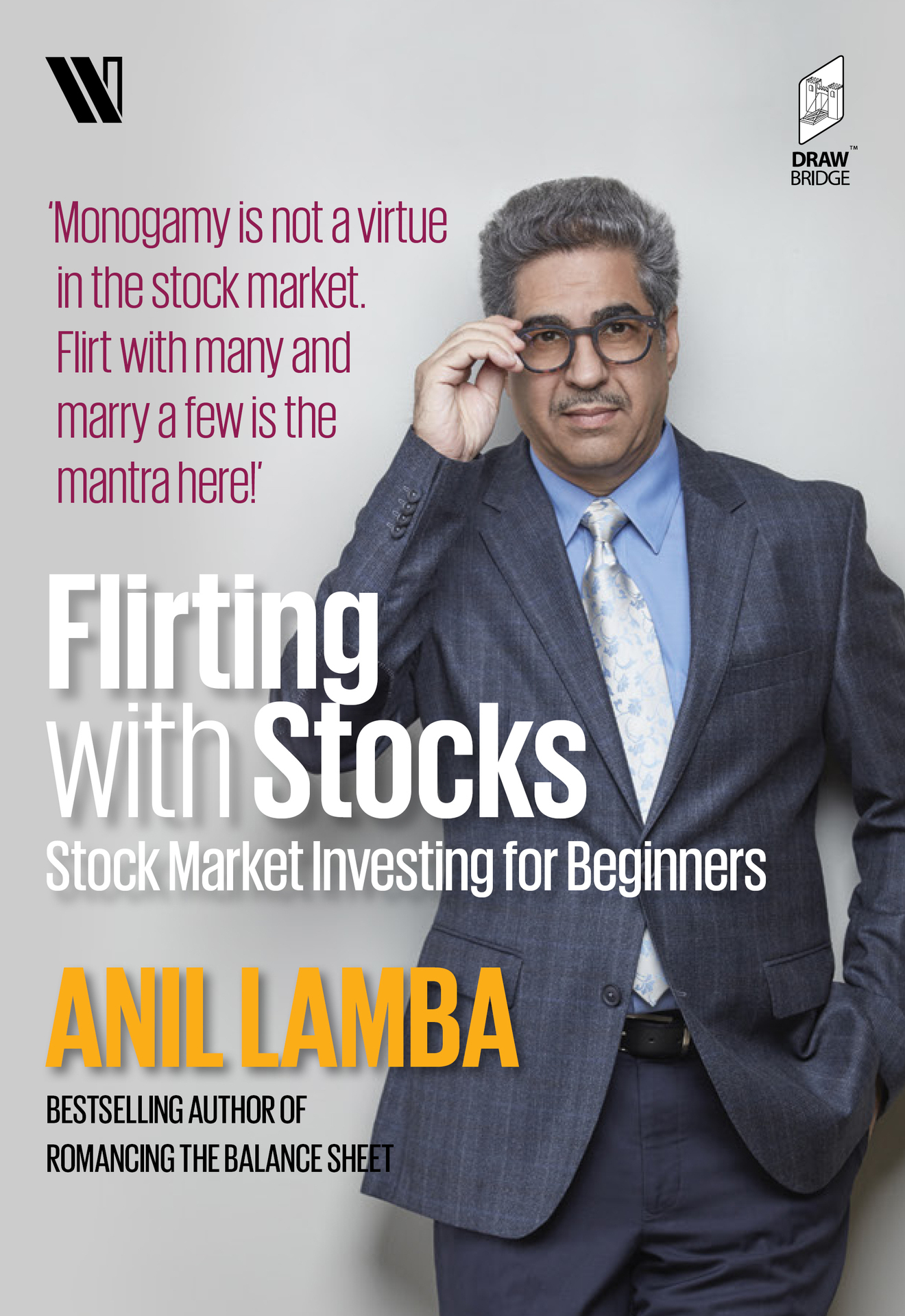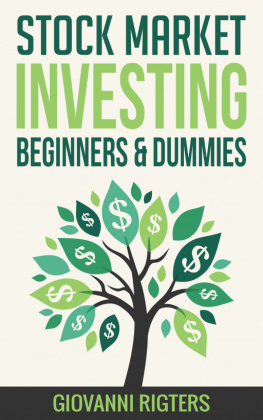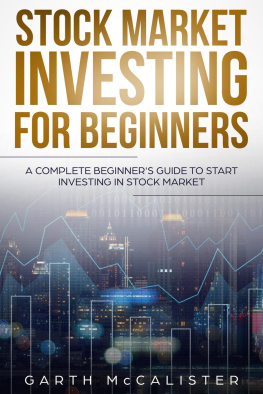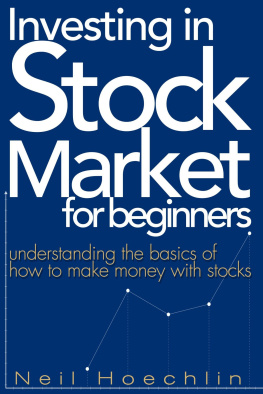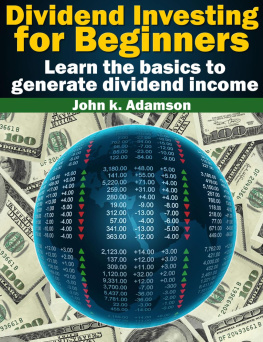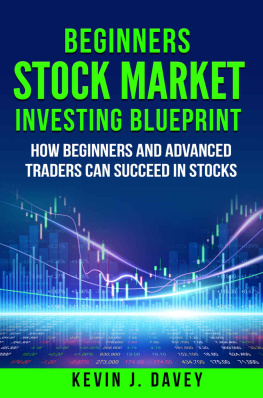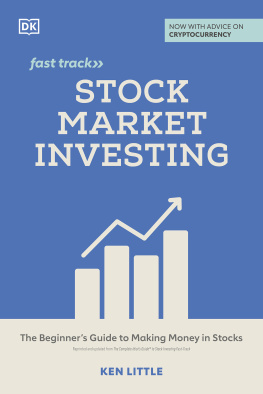First published by Westland Publications Private Limited in 2018
61, 2nd Floor, Silverline Building, Alapakkam Main Road, Maduravoyal, Chennai 600095
Westland and the Westland logo are the trademarks of Westland Publications Private Limited, or its affiliates.
Copyright Anil Lamba, 2018
ISBN : 9789387578661
The views and opinions expressed in this work are the authors own and the facts are as reported by him, and the publisher is in no way liable for the same.
All rights reserved
Design by CreativeEdge
www.creativeedge.net.in
No part of this book may be reproduced, or stored in a retrieval system, or transmitted in any form or by any means, electronic, mechanical, photocopying, recording, or otherwise, without express written permission of the publisher.
Many years ago, for a very brief stint, my company offered portfolio management services.
I had just passed out as a Chartered Accountant and developed a new-found interest in the stock market. The world was transitioning from mainframe computers to PCs (I was among the first in my town to own one). I had a friend who was a share market sub-broker with whom I often had engaging conversations regarding certain stocks that interested me.
This friend and I started a company offering subscription based portfolio management services.
When a member enrolled we would collect all the details of existing holdings and feed it into the PC. My friend regularly studied the market and came up with buy/sell recommendations. Each member was sent a weekly newsletter containing a list of stocks to buy. For the sell recommendation, the database would throw up names of clients who held those shares, and only such clients were contacted by phone suggesting they exit. And I would take into account the tax implications of the resultant capital gains or losses before advising the client on the course of action to take.
It was a fully computerised, personalised portfolio management service, providing tax-linked advice. Definitely among the first of its kind then.
One of the stocks my friend was recommending for purchase in our weekly newsletters was Mazda Leasing (which was later re-christened as Mazda Industries and Leasing Ltd).
Mazda was then trading at around Rs 15 or so and was tipped to touch Rs 100.
We not only preached but also practised, often buying for ourselves what we were suggesting to our clients. Mazda rose to 25.
The next newsletter was again bullish on Mazda. It will touch 100 was the prediction.
Mazda increased to around 40.
The newsletter continued to echo its optimistic opinion.
Then came the stock market crash of that time and the market collapsed.
One of the characteristics of a crash is that prices of shares fall across the board whether they deserve to or not. The reverse happens when markets are booming - even the shares that dont deserve to rise start climbing. A prudent investor gets rid of the junk collected along the way during boom times and starts to pick up under-valued gems during a crash.
Our darling Mazda came tumbling down too and settled at around Rs 6.
This marked the end of our first (and last) attempt at providing stock market related services.
For years thereafter Mazda remained stagnant at Rs 6.
One day, while doing a routine check of the performance of my personal portfolio of shares, I noticed a movement in the price of Mazda. After years of being a straight line on the graph, it had inched up a bit to 7 and then to 8. The following day it was 10, the next day the price had risen to 12 and soon it had gone up to 15.
Around this time a letter arrived from Mazda announcing a 1:1 rights offer. And all at once the mystery behind the sudden rise in the price of Mazda became clear.
Putting two and two together one reasoned:
- The company wanted to raise more money;
- Going by the below-par price at which the scrip was trading, there was no possibility for the issue to succeed;
- Somebody from the inside was indulging in price-rigging, which explained the sudden upward movement;
- Now that the share was trading at 15, the rights being offered at a face value of Rs 10 appeared attractive.
My immediate reaction to the rights offer was a derisive laugh. The letter was torn into bits and thrown into the bin.
My friends who had received the same offer reacted in similar fashion.
However, the price of Mazda continued to rise.
It went up to 18, then 20, then 25.
At around 25, it plateaued for a while and fell a bit.
Foxed at this phenomenal rise in its price but also pleased, many who had invested when we were strongly recommending the share, sold and got out since they had managed to more or less recover the amount invested, and in some cases a little more.
I decided to wait for the second dip.
Mazda resumed its upward journey, crossing 30, going up to 40, then 42. It stabilised for a bit at 42, then fell to 40.
Let me not get too greedy, I thought to myself, and decided to sell 50 percent of my holdings.
Mazda resumed its ascent once again - 50, 60, 70, 75. It hung around 75 for a while and then fell by a couple of rupees.
I decided that was enough. I had recovered the principal sum invested and the interest for the waiting period too, and sold the remaining shares left with me.
Mazda started to rise yet again. It went up to 100, then 150, then 200, 300, 500, 1,000. Very soon it touched 1,600.
I am recounting this anecdote here to highlight the price we pay when we go by assumptions rather than facts.
I had assumed that somebody connected to the promoters was rigging the price when I decided to ignore the rights offer received. What I didnt know was that Harshad Mehta had taken over the company which was causing the price to go up, a fact that a little research would have thrown up. (These were the heady days when the mere knowledge, or even a rumour, that Harshad Mehta was taking interest in a stock was enough to push the market up. In fact this was such a crazy phase that when it was revealed that Mr Mehta had invested in Mazda, the prices of some other companies that had Mazda in their name went up too).
For the benefit of those who may not be aware, Harshad Mehta was an Indian stockbroker and the key accused in the Securities Market Scam of 1992 valued at almost Rs 5,000 crores. He engaged in a massive manipulation of stocks using money diverted from banks.
Around the time the price touched 1,600, I was speaking with a friend on the phone and since the market was booming, the conversation veered to the stocks he was holding. He said he did not invest any more and only had the shares that we had recommended many years back. He opened his cupboard and discovered 500 shares of Mazda.
The lesson again to be learned is that sometimes it pays to not monitor the market on a regular basis. If you do so, you may be tempted to sell in case you see an opportunity to make profit, as many of us did in the case of Mazda. And my friend, who was blissfully unaware of what was going on, managed to sell the same stock at around 1,600.

